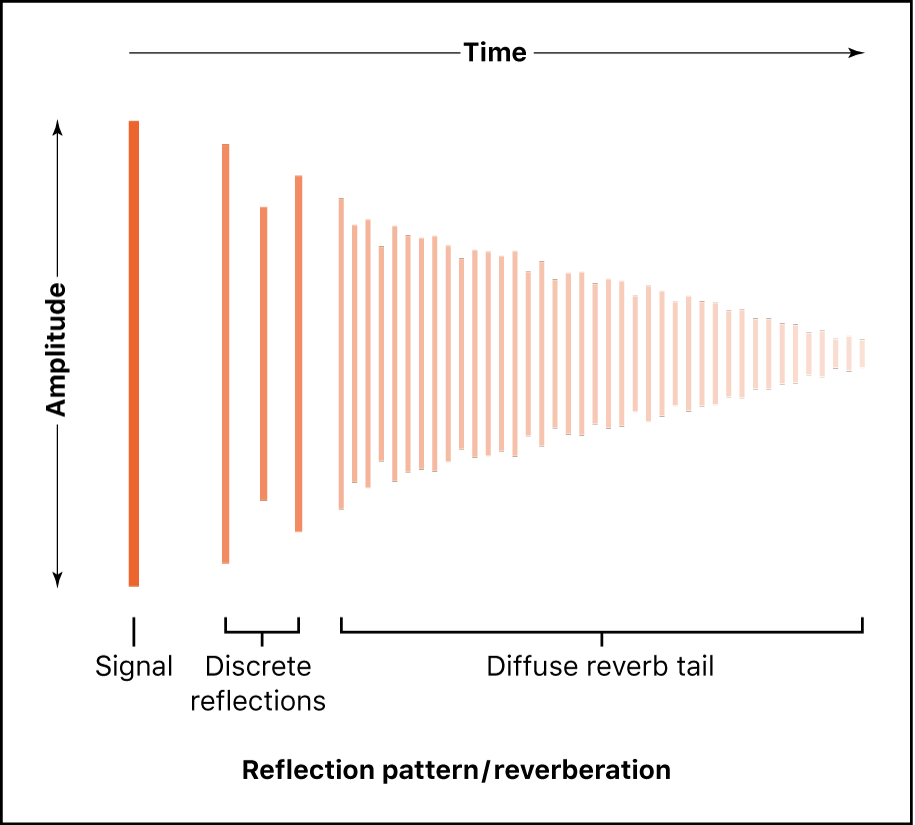Intro to reverb effects in Final Cut Pro for Mac
You can use reverb effects to simulate the sound of acoustic environments such as rooms, concert halls, caverns, or an open space.
Sound waves repeatedly bounce off the surfaces—walls, ceilings, windows, and so on—of any space, or off objects within a space, gradually dying out until they are inaudible. These bouncing sound waves result in a reflection pattern, more commonly known as a reverberation (or reverb).
The starting portion of a reverberation signal consists of a number of discrete reflections that you can clearly discern before the diffuse reverb tail builds up. These early reflections are essential in human perception of spatial characteristics, such as the size and shape of a room.

The first form of reverb used in music production was actually a special room with hard surfaces, called an echo chamber. It was used to add echoes to the signal. Mechanical devices, including metal plates and springs, were also used to add reverberation to the output of musical instruments and microphones.
Digital recording introduced digital reverb effects, which consist of thousands of delays of varying lengths and intensities. The time differences between the original signal and the arrival of the early reflections can be adjusted by a parameter known as predelay. The average number of reflections in a given period of time is determined by the density parameter. The regularity or irregularity of the density is controlled with the diffusion parameter. An example of a digital reverb is ChromaVerb. See Intro to ChromaVerb in Final Cut Pro for Mac.
Computers make it possible to sample the reverb characteristics of real spaces, using convolution reverbs. These room characteristic sample recordings are known as impulse responses.
Convolution reverbs work by convolving (combining) an audio signal with the impulse response recording of a room’s reverb characteristics. Final Cut Pro includes a convolution reverb called Space Designer. See Intro to Space Designer in Final Cut Pro for Mac.
Download this guide: PDF